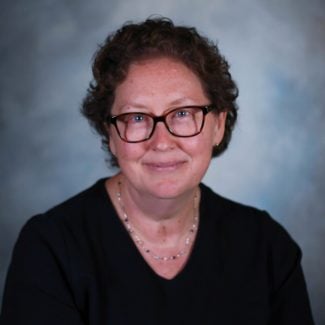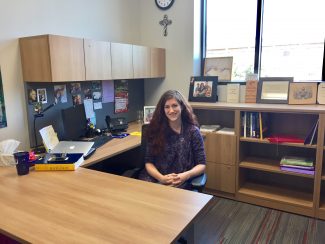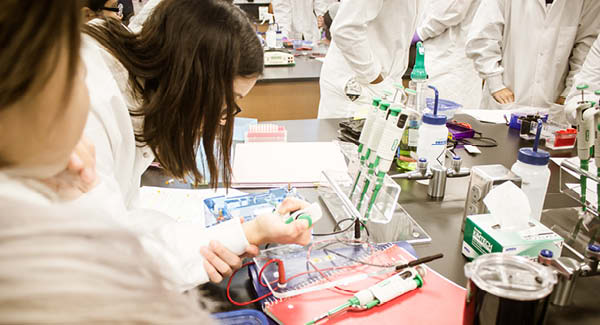The new, multimillion-dollar Bishop Gerber Science Center has new equipment and research projects happening behind every door.
In fact, there are an overwhelming amount of amazing projects so let’s start with biology.
Heimerman, the previous science building, was loved, but worn. Newman has exceptional standards for its students, so providing an exceptional space for them to learn was a must. This state-of-the-art building includes a fully functioning cadaver lab, an $80,000 magnet used to examine carbon and hydrogen molecules in an atom, a DNA sequencer and spectroscopes of all kinds along with many other tools likely not found on most college campuses.
Students constantly utilize the multiple study spaces available in the building to collaborate on projects but what happens behind the classroom doors is even more exciting. Recently acquired new tools and devices are making hands-on learning at Newman a one-of-a-kind experience.
DNA research
During fall break, faculty participated in training for a recently purchased DNA sequencer.

Sarah Evans, professor of biology, plans for her class to use the DNA sequencer this semester. She said, “My research students and I will be sequencing sections of the genome of some different halophilic (salt-loving) bacteria that we isolated from the Hutchinson Salt Mines last fall. We’re hoping to use this data to identify exactly what kind of organisms they are.” She mentioned it’s rare that cells can survive and thrive in salt concentrations as high as this.
Evans said, “This sequencer will open up lots of opportunities for biological, molecular and genetic studies that have previously been impossible here at Newman.”
Kiley Hicks, assistant professor of biology, and her research students will use the DNA sequencer as well. They will study mutations in the mitochondrial DNA of nematodes, and look at how factors such as survival rates, fertility rates, behavior and more can be traced back to changes in the genes.
Hicks has also spent time studying a species of worm called Caenorhabditis briggsae, also known as C. briggsae. Her research group recently passed a large milestone in their research of the worm when it isolated mitochondrial DNA from the species.
Thankful for the tools, Evans said, “More and more research in biology is based on genetic and molecular information, whether you’re talking about pure or applied science with applications in medicine and health. We’re hoping that giving students opportunities to study these techniques first-hand will help them to understand the importance and significance of this.”
Cancer-related research
Assistant Professor of Biology Jenifer Leming spoke in a previous article about bringing her passion for cancer research to her students. Her class has started a research project using strands of small cell carcinoma of the pancreas (SCCP), a rare form of pancreatic cancer. This deadly form of cancer results in only a two-to-five month survival time after diagnosis.
“Because of its rarity,” explained Leming, “there is very little known about the mechanisms used by these tumors, which contributes to the lack of consensus regarding what the standard of care should be for these patients.”
She and her class are focusing their efforts on understanding chemoresistant mechanisms in this cell type. She hopes this will contribute to better treatment options for patients.

Leming said, “Resources for SCCP research are as rare as the disease; however, I have obtained the only established line of these cells and it is my hope that, starting this summer, Newman students will be helping me to understand how this cancer behaves and why treatment options may fail.”
Leming has done extensive research on the most common form of pancreatic cancer. She worked to characterize a significant chemoresistance mechanism and generated data that led to a clinical trial for a new chemotherapeutic regimen beginning in 2018. Her expertise is of great use in this current research project.
Michael Bradley, associate professor of biology, utilizes many tools in his classroom. The research he and his nine students are working on currently is focused on breast cancer cells. He explained, “Essentially our goal is to determine whether certain drugs/chemicals are able to interact with these cells in either a positive or inhibitory manner.”
The goal, Bradley said, is to find a way to kill the cells but not kill the women in whom they might be growing.
Bradley explained that the beginning of the process was to insert the cells with special dyes that react to light at specific wavelengths.
“We then mount dishes containing these cells onto a Nikon microscope equipped with special optics that permit the use of ultraviolet light, and we illuminate these cells with that light, all the while treating the cells with the drugs and chemicals that we wish to study,” he said. “If the drugs react with the cells, the dyes inside the cells will change their light properties in ways that a specialized piece of equipment that is attached to the fluorescence microscope can detect.”
That equipment is called a scanning monochromator. He continued, “In combination, the Nikon microscope and the scanning monochromator allow us to perform quantitative fluorescence assays on cells and tissues of virtually any kind, and establish physiological responses by cells to any number of pharmacological agents.”
Bradley is thankful for the opportunity the students have to use these tools. He also appreciates the donors who contributed to the Facing Forward campaign, which made all of this possible.
Read “part 2” of the “Sophisticated Science” series, in which, the research projects, new tools and experiments in the chemistry department are featured.


